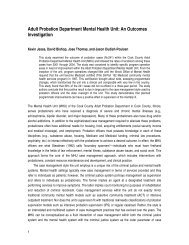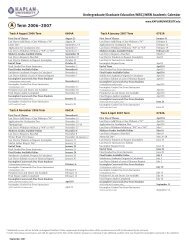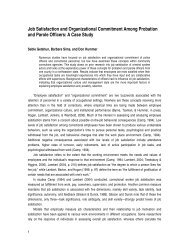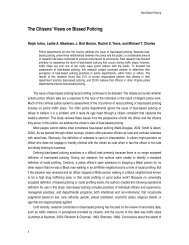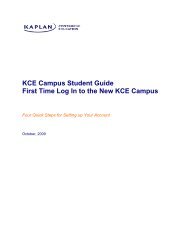Police Officer - Kaplan University | KU Campus
Police Officer - Kaplan University | KU Campus
Police Officer - Kaplan University | KU Campus
Create successful ePaper yourself
Turn your PDF publications into a flip-book with our unique Google optimized e-Paper software.
Bulen<br />
interdisciplinary model of applicant attraction strategies from the organization perspective.<br />
The applicant attraction strategies component of the Rynes and Barber Model outlines<br />
three general strategies for enhancing applicant attraction: (a) improving recruitment practices,<br />
(b) targeting non-traditional applicants, and (c) modifying employment inducements.<br />
Based on economic and sociological field research, the authors suggest that applicanttargeting<br />
strategies and monetary and non-monetary inducements play a vital role in the<br />
organization’s attempts to attract more, better, or more cost-effective applicants.<br />
Rynes and Barber’s suggestions regarding altering recruitment practices to focus on<br />
applicant attraction strategies has received research attention in the private sector<br />
(Winter, 1996a; Winter, 1996b; Young et al., 1997; Young, Rinehart, & Heneman, 1993).<br />
Examples of recruitment factors that they hypothesized to influence applicant attraction<br />
include the characteristics of organizational representatives, recruitment message<br />
content, recruitment source, and timing of the recruitment activity.<br />
Methods<br />
This research addressed whether inservice police patrol officers, as applicants for the<br />
position of recruit police officer, differ in their reactions to and ratings of job descriptions in<br />
formal position announcements with respect to three independent variables: city residency<br />
requirement, specialization opportunities, and educational reimbursement. To date no<br />
empirical studies have investigated how the mention of such factors as city residency<br />
requirement, specialization opportunities, and educational reimbursement influence the<br />
attraction of job applicants to the position of recruit police officer.<br />
Research Questions<br />
The demographics of police departments are changing. To be successful in recruiting a<br />
representative demographic applicant pool, organizational representatives must construct<br />
and implement police officer recruitment practices (e.g., written or verbal benefits of the<br />
job) that (a) meet the personal needs of the officers, (b) meet the organizational needs of<br />
the police department, and (c) meet the needs of the community being served. <strong>Police</strong><br />
officer recruitment and selection may be one of the most critical factors in determining the<br />
overall effectiveness of a police department. It is the officer on the street who interacts<br />
with the public and becomes the police department in the eyes of the citizens. If the officer<br />
makes a positive public impression, the department can expect community support. If the<br />
officer makes an impression that is not positive, the result can be criticism and reduced<br />
community support. All other aspects of departmental operations depend on the quality of<br />
the officers wearing the uniform. Therefore, officer selection is a key factor in determining<br />
overall departmental effectiveness (Schonengerdt & Robinson, 1983).<br />
72 Professional Issues in Criminal Justice Vol 4(3 & 4), 2009



